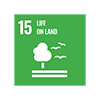Nature
Our industrial activities have the potential to impact surrounding ecosystems by direct operations during an industrial asset’s life cycle.
From project design to operational closure, we focus on reducing our physical footprint on land; by identifying, managing and addressing our actual and potential impacts on biodiversity, and by applying the principles of the mitigation hierarchy (avoid, minimise, restore, offset).
Watch Lucy Roberts, Head of HSEC and Human Rights, speak about our approach to rehabilitation
Our approach
We are committed to minimising and mitigating the impacts of our industrial assets on nature. We recognise that there is an opportunity for us to contribute to the protection of nature within the regions where we operate.
We are responsible for managing areas of land we own or lease that are protected by legislation or other mechanisms. We manage our land in a productive and sustainable manner ensuring proactive stewardship of our landholdings, including those that have not undergone industrial activity. We identify, record and protect in alignment with local regulatory requirements, and we also consider best practice, cultural heritage and archaeologically sensitive locations on our landholdings.
We require our industrial assets to establish a robust environmental and socio-economic knowledge base and to develop risk-based biodiversity action plans and site-level biodiversity targets to drive progress in this important area. These plans can include measures such as preliminary clearing works, habitat relocation, flora and fauna conservation, invasive species control and fire and grazing management. Where possible, we require the plans to support the continuation or enhancement of land practices that benefit local communities, such as grazing and other agricultural activities, while considering impacts to ecosystems.
We are committed to not conducting any exploration, drilling or mining in World Heritage areas and International Union for Conservation of Nature (IUCN) category I-IV protected areas (‘no-go’ areas), and to not putting the integrity of such properties at risk. Our industrial assets work to avoid the loss of any IUCN Red List threatened species.
Nature
We support species preservation and biodiversity conservation through integrated land use planning and management practices, partnerships and research, where appropriate. This supports the long-term sustainability of our industrial assets and the environment in which we operate, by seeking opportunities to reduce our operational footprint, where possible, and addressing biodiversity impacts.
Our industrial assets are required to define physical and operational boundaries for biodiversity conservation and ecosystem services and undertake biodiversity and ecosystem services baseline studies for use in the completion of risk assessments. These form the basis for the management of biodiversity-related risks and opportunities, including natural capital (ecosystem services) and nature-based solutions, together with consideration of relevant emerging requirements.
Where relevant, our industrial assets are conducting biodiversity footprint assessments and evaluating how they can achieve no net loss of biodiversity by closure against a 2020 baseline. Where possible, we do this by implementing the mitigation hierarchy and offsetting impacts that cannot be mitigated or restored.
Developing biodiversity targets
We are in the process of establishing biodiversity targets for our industrial assets, aiming to complete this exercise by the end of 2025.
Our internal working group of subject matter experts collaborates on our approach to biodiversity management. In South Africa, we have partnered with the Endangered Wildlife Trust to develop a permanent training programme in line with the Biological Diversity Protocol (BD Protocol). The BD Protocol is a comprehensive biological diversity accounting and reporting framework, and we have adopted it to implement a consistent methodology and accounting approach for biodiversity.
The training programme supports our internal understanding of biodiversity and strengthens internal capacity to deliver biodiversity targets based on a standardised biodiversity accounting framework. The training should enable us to establish methodical biodiversity targets based on each industrial asset’s biodiversity context, and to work towards creating auditable biodiversity footprint assessments.
Taskforce on Nature-related Financial Disclosures (TNFD)
We have actively participated, through the ICMM, in reviews and pilot programmes that have supported the testing, iteration and refinement of recommendations from the TNFD. We have incorporated various elements of the TNFD recommendations into our environmental governance framework, such as the TNFD’s LEAP (locate, evaluate, assess, and prepare) approach.
In 2023, we started to utilise the TNFD’s LEAP approach. Using this approach, we have ‘located’ our industrial sites within or adjacent to areas of high ecosystem integrity, key biodiversity areas, areas of water stress or significant cultural, heritage or economic sites. We have determined priority sites through a multi-criterion ranking process.
In addition, we have ‘evaluated’ and ‘assessed’ the impacts and dependencies considering the BD Protocol and using applicable global tools. The assessments identify ecosystems and their condition. We also conducted high-level screening and materiality assessments of dependencies at each industrial asset.
We are evaluating the dependencies for each of these industrial sites and assess their risks and opportunities. The results from the LEAP assessment will form part of our strategy for nature.
Nature-based solutions that have been identified include quality and maintenance of water flows, provision of food and shelter, control of pests and disease, purification of atmospheric gases, mass stabilisation and erosion control, and climate regulation. Many of our industrial assets have existing strategic partnerships in place to protect or restore habitat areas, including partnerships with communities.
High biodiversity areas
Around 90,000 hectares of our industrial assets’ land is within or adjacent to land with high biodiversity value (2022: 76,000 hectares) and about 130,000 hectares is within or adjacent to legally protected areas (2022: 129,000 hectares).
Where we own or lease land adjacent to protected areas or high biodiversity areas outside of protected areas, we require the relevant industrial assets to have completed biodiversity risk assessments and have biodiversity management plans in place where required.
Our industrial assets located within or near areas identified as having a high biodiversity value include:
Asia
| Country | Industrial asset | Area of high biodiversity value |
|---|---|---|
| Philippines | Pasar smelter and refinery | Near an area of high biodiversity value containing several endangered coral species as well as mangroves which support fauna such as coral, hermit crabs, mud crabs and birds. |
| Kazakhstan | Kazzinc (Altay concentrator) | Near Nizhne-Turgusun State Nature Sanctuary, which is of botanical importance |
Australia and New Caledonia
| Country | Industrial asset | Area of high biodiversity value |
|---|---|---|
| Australia | Rolleston mine | Near to the Albinia National Park, which includes a large, protected area that sustains an endangered Bluegrass plant community. |
| Australia | Clermont mine | Near to the adjoining Blair Athol and Apsley State Forests, and the Bluegrass Nature Refuge. There is also a refuge area for the endangered Belyando Cobbler’s-Peg (a perennial daisy that is short-lived) on the mine lease. |
| Australia | Hail Creek mine | Near to the Homevale National Park, which protects important biodiversity and historic fossil locations. |
| Australia | United Wambo mine | Near to the Wollemi National Park. |
| Australia | Bulga mine | Near the Wollemi and Yengo National Parks and situated adjacent to the Lower Hunter Valley which is an ‘Important Bird and Biodiversity Area’ internationally recognised by BirdLife International. The Wollemi and Yengo National Parks are part of the Greater Blue Mountains World Heritage Area. |
| Australia | Ulan mine | Near the Goulburn River National Park and Munghorn Gap Nature Reserve and lies within the Mudgee-Wollar Important Bird and Biodiversity Area. |
| Australia | Mount Owen mine | Partly within the Ravensworth State Forest |
| Australia | Newlands mine | Near the Newlands Nature Refuge area that supports Blue Grass and Brigalow plant communities and birds such as Squatter Pigeon and Satin Flycatcher. |
| Australia | Queensland Metals (Lady Loretta mine) | Within the Buckley River Important Bird and Biodiversity Area. It supports i.a. habitat of Purple necked Wallaby as well as Carpentarian Grass Wren. |
| Australia | McArthur River mine | Near the McArthur River which is of high biodiversity value due to the diversity and abundance of fauna that the river supports. A key species of concern is the Largetooth Sawfish, which is listed as Vulnerable under local legislation and the foraging habitat of the Gouldian Finch must be protected. |
| New Caledonia | Koniambo industrial complex | Within the Massif de Koniambo Important Bird and Biodiversity Area and near the Voh Marine Important Bird and Biodiversity Area. |
Africa
| Country | Industrial asset | Area of high biodiversity value |
|---|---|---|
| Democratic Republic of Congo | Mutanda Mining | Within the Basse-Kando Hunting Zone which contains species of diverse fauna and flora. |
| South Africa | Chrome PSV (Helena, Thorncliffe and Magareng mines) | Within the Sekhukuneland Centre of Plant Endemism, the third richest ultramafic-induced Centre of Plant Endemism in Southern Africa. They are also located within Critical Biodiversity Areas identified in provincial biodiversity conservation plans. |
| South Africa | Chrome PSV (Kroondal mine) | Within the transition zone of the Magaliesberg Biosphere Reserve, that lies at the interface between two biomes, the grassland plateaux and the sub-Saharan savanna, and therefore contains species of both biomes and exceptionally diverse fauna and flora. The Magaliesberg Biosphere Reserve is located in its concession and also overlaps with the Magaliesberg Important Bird and Biodiversity Area. |
| South Africa | Chrome PSV (Lydenburg smelter) | Near freshwater critical biodiversity and ecological support areas, as defined in the 2014 Mpumalanga biodiversity conservation plan. It also sits within the Lydenburg Nature Reserve. |
| Chrome PSV (Rietvlei and Waterval mines) | Near the Magaliesberg Protected Natural Environment and Magaliesberg Important Bird and Biodiversity Area. Rietvlei mine is located within a Critical Biodiversity Area (CBA 2), adjacent to an Ecological Support Area (ESA 1) and near both, a terrestrial and aquatic CBA 1. The Waterval Chrome mine is located within a CBA 2 and an ESA 2 area. | |
| South Africa | Chrome PSV (Boshoek Smelter) | Within a Critical Biodiversity Area (CBA 2) and an Ecological Support Area (ESA 1) and includes riparian areas of medium sensitivity associated with watercourses. |
| South Africa | Astron (Milnerton Refinery, East London Terminal and Durban Lubricant Plant) | Near the Rietvlei Wetland Reserve and Bird Sanctuary in the Table Bay Nature Reserve, designated as key biodiversity and protected areas; near East London and South key biodiversity area; and near Bluff Nature Reserve, a key biodiversity area. |
Europe
| Country | Industrial asset | Area of high biodiversity value |
|---|---|---|
| Spain | Asturiana de Zinc (San Juan de Nieva smelter) | Near the Monumento Natural Dunas El Espartal, home to a sensitive and important dune ecosystem and near the Cabo Busto-Luanco Important Bird and Biodiversity Area and Natura 2000 site, which is part of a EU network of core breeding and nesting sites for rare and threatened species and natural habitat types. |
| United Kingdom | Britannia Refined Metals (BRM) refinery | Near the Thames Estuary and Marshes Important Bird and Biodiversity Area. |
| Germany | Nordenham smelter | Near the Unterweser Important Bird and Biodiversity Area and Natura 2000 site Unterweser. It is also near the Butjadingen Important Bird and Biodiversity Area and Natura 2000 birds directive site, as well as to the Lower Saxony Wadden Sea National Park, which is also a designated Natura 2000 site. |
South America
| Country | Industrial asset | Area of high biodiversity value |
|---|---|---|
| Colombia | Cerrejon mine | Near the Mushaisa Aguas Blancas Santos Helena private reserve, which is part of the RUNAP network of natural protected areas. Near the Montes de Octa forest reserve. |
| Brazil | AleSat (Brasilia Terminal) | Near Brasilia National Park, a key biodiversity and protected area. |
North America
| Country | Industrial asset | Area of high biodiversity value |
|---|---|---|
| Canada | CCR refinery | Near the Fleuve Saint-Laurent protected area, which is on the banks of the St Lawrence river. This area is an important waterfowl gathering area, and near the Iles-de-Boucherville national park. |
| Canada | Sudbury mine | Near the Windy Lake Provincial Park, which is protected as a recreational area |
| Canada | Raglan mine | Near a meteoritic crater within the Parc national des Pingualuit |
Sustaining biodiversity at Botany Marsh
Our Britannia Refined Metals (BRM) industrial asset owns 18.5 hectares of marshland adjoining the River Thames in Kent, UK. Since 2013, BRM has worked with Kent Wildlife Trust to implement a Habitat Management Plan on the land, and to help the Botany Marshes achieve conditions for nurturing biodiversity. In 2017, the status of Local Wildlife Site was reached and in 2021 the site was incorporated into the broader protected area known as Swanscombe Peninsula SSSI (Site of Special Scientific Interest – a legal designation by Natural England).
Before the works started, the marsh had deteriorated considerably since the first study was carried out in 2004, and without intervention it would have deteriorate to a level where it would have not supported the protected species any longer. The Habitat Management Plan included, for example, creating a new open water area exclusively for birds, and egg-laying sites for grass snakes.
Ongoing maintenance activities are carried out, like cutting reed beds and bankside vegetation to preserve natural habitats, and removal of shrub to create sheltered conditions for invertebrates and basking locations for reptiles. The marshland is open to the local community, and local schools use it for educational field trips. It includes features such as a looped Nature Walk with information boards, benches, picnic table and a large grass area suitable for football.
In 2019, an ecological survey found that the area has become home to a new resident – the water vole. This was a fantastic development, as the water vole is a UK Biodiversity Action Plan (BAP) priority species and protected by wildlife legislation.
Furthermore, bird surveys and bird ringing campaigns confirmed the positive trend on the variety and quantity of birds visiting and nesting on the Marsh, including legally protected species. The site has become a local spot for birdwatching with sightings being recorded online.
Environmental incidents
We are committed to reducing our environmental impacts through decreasing the number of environmental incidents. We assess and record high potential risk incidents (HPRIs) at our industrial assets, which include events that could have resulted in a catastrophic or major environmental incident. The relevant senior management teams’ share lessons learnt from HPRIs and the affected industrial assets are required to implement action plans to address the causes and prevent repeats.
Principles we follow
-
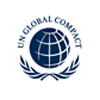 UN Global CompactVisit the website
UN Global CompactVisit the website -
 Principle 7Read more
Principle 7Read morebusinesses should support a precautionary approach to environmental challenges
-

-
 Principle 9Read more
Principle 9Read moreencourage the development and diffusion of environmentally friendly technologies
-
ICMMVisit the website
-
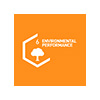
-
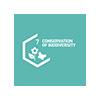
-
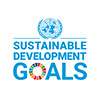 UN SD GoalsVisit the website
UN SD GoalsVisit the website -
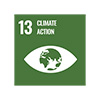
-
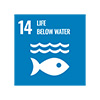
-
